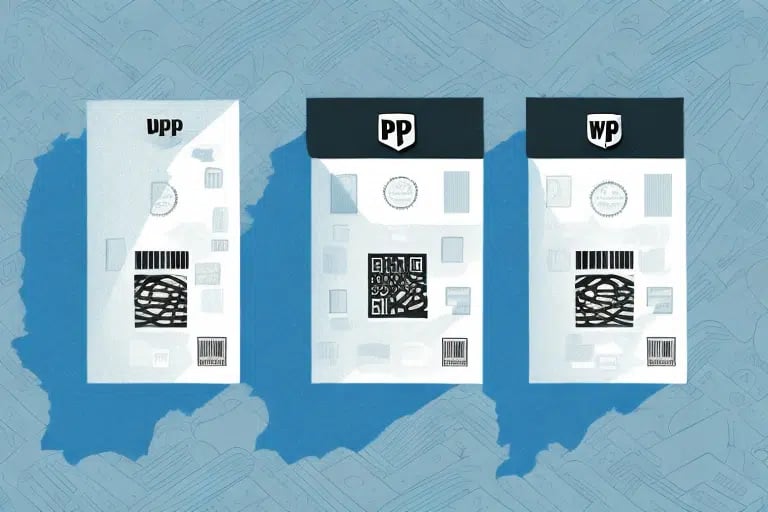Introduction to UPS and UPS WorldShip
In today’s fast-paced global economy, shipping is a critical component of any business’s operations. Companies need a reliable and efficient way to get products to their customers and partners in a timely and cost-effective manner. Two popular shipping solutions available are UPS and UPS WorldShip. These tools offer distinct features and benefits, and it’s important to understand the differences between them and their applications before choosing the one that best suits your business needs.
Understanding UPS
What is UPS?
UPS, or United Parcel Service, is a global transportation and logistics company specializing in package delivery and supply chain management. With services that include air, ground, and ocean freight shipping, customs brokerage, warehousing, and distribution, UPS operates in over 220 countries and territories worldwide. Renowned for its reliability, speed, and flexibility, UPS offers a range of delivery options such as same-day, next-day, and three-day services, as well as specialized services for hazardous materials, oversized items, and international shipments.
History and Growth
Founded in 1907 in Seattle, Washington, by James E. Casey and Claude Ryan, UPS began as the American Messenger Company, a small messenger service delivering packages on foot or by bicycle. Over the years, the company expanded its services and rebranded as United Parcel Service in 1919. Today, UPS is one of the largest package delivery companies globally, employing over 500,000 people and operating a fleet of more than 120,000 vehicles.
Sustainability and Social Responsibility
UPS is committed to sustainability and social responsibility. The company aims to reduce its greenhouse gas emissions by 12% by 2025 and has invested in alternative fuel vehicles and renewable energy sources. Additionally, UPS supports various charitable organizations and disaster relief efforts, including partnerships with the American Red Cross and the United Way. These initiatives demonstrate UPS’s dedication to environmental stewardship and community support.
Understanding UPS WorldShip
What is UPS WorldShip?
UPS WorldShip is a comprehensive shipping software solution designed to help businesses automate and streamline their shipping processes. By integrating with various business systems such as e-commerce platforms, customer relationship management (CRM) software, and enterprise resource planning (ERP) systems, WorldShip enables companies to create shipping labels, track packages, manage inventory, and access real-time shipping data in one centralized location.
Features and Benefits
One of the key advantages of UPS WorldShip is its ability to customize shipping options based on specific business needs. Businesses can set up rules for shipping based on package weight, destination, or delivery time, which helps optimize shipping processes and reduce costs. Additionally, WorldShip offers robust reporting and analytics tools that allow businesses to monitor shipping costs, identify trends, and make data-driven decisions to enhance their shipping operations.
For businesses with high shipping volumes or complex shipping requirements, WorldShip provides valuable features such as batch processing, address book management, and integration with barcode scanners, enhancing efficiency and accuracy in shipping tasks.
Comparing UPS and UPS WorldShip
Key Differences
The primary distinction between UPS and UPS WorldShip lies in their roles: UPS is a shipping carrier responsible for the physical transportation and delivery of packages, while UPS WorldShip is a software tool that manages and tracks those packages. WorldShip is designed to complement UPS services by providing digital tools to optimize and streamline shipping workflows.
Features Comparison
While both services offer real-time tracking and delivery notifications, UPS provides a broader range of delivery options and specialized services for various shipment types. In contrast, WorldShip focuses on enhancing the shipping process through advanced features like customizable shipping labels, batch processing, and seamless integration with business systems.
Pros and Cons
- UPS Pros: Global reach, flexible delivery options, extensive retail network.
- UPS Cons: Higher pricing for certain services, limited customization without additional tools.
- UPS WorldShip Pros: Automation of shipping processes, real-time tracking, integration with business systems.
- UPS WorldShip Cons: Requires technical expertise for setup and maintenance, potential system compatibility issues.
Choosing the Right Shipping Solution
Assessing Business Needs
When deciding between UPS and UPS WorldShip, it’s essential to evaluate your business’s specific shipping needs. Consider factors such as the volume and frequency of shipments, the complexity of your shipping processes, and the level of automation and integration required with other business systems.
Pricing Models
UPS offers various pricing options, including flat-rate shipping, real-time quotes, and volume discounts, which can be tailored to different business sizes and shipping volumes. On the other hand, UPS WorldShip’s pricing typically involves a software license fee, along with additional costs for ongoing support and updates. It’s important to compare these pricing structures to determine which option provides the best value for your business.
Setup and Implementation
Implementing UPS services usually involves creating an account, scheduling pickups and deliveries, and printing shipping labels. UPS WorldShip requires a more complex setup process, including software installation, configuration, integration with existing business systems, and customization of shipping processes. Businesses should assess their technical capabilities and resources to ensure a smooth implementation of WorldShip if chosen.
Optimizing Your Shipping Process
Tips and Best Practices
- Use Cost-Effective Shipping Options: Analyze different shipping methods to find the most economical choices for your needs.
- Automate Shipping Processes: Utilize WorldShip’s automation features to reduce manual tasks and minimize errors.
- Integrate with Business Systems: Ensure seamless integration with CRM, ERP, and e-commerce platforms to streamline operations.
- Leverage Reporting Tools: Use advanced reporting and analytics to monitor performance and identify areas for improvement.
Troubleshooting Common Issues
Common issues with UPS and UPS WorldShip include delayed deliveries, lost packages, and system errors. To address these problems, businesses should:
- Contact UPS customer support for assistance with delivery issues.
- Ensure that all software updates are applied to WorldShip to prevent system errors.
- Invest in ongoing training for staff to effectively use WorldShip’s features.
- Implement best practices for packing and labeling to reduce the risk of lost or delayed packages.
Impact on Supply Chain Management
Integrating a shipping solution like UPS WorldShip can significantly enhance a business’s supply chain management. By automating and streamlining shipping processes, companies can improve efficiency, reduce errors, and save time and money. Additionally, the integration with other business systems provides a comprehensive view of supply chain operations, enabling more informed decision-making and better overall management.
Conclusion
Understanding the differences between UPS and UPS WorldShip is crucial for any business looking to optimize its shipping processes. UPS offers reliable and flexible shipping services suitable for businesses of all sizes, while UPS WorldShip provides advanced tools for managing and automating shipping workflows, ideal for businesses with high shipping volumes and complex needs. By evaluating your specific shipping requirements, considering pricing and functionality, and implementing best practices, you can choose the shipping solution that best enhances your business’s efficiency, reduces costs, and delivers superior outcomes for your customers and partners.








